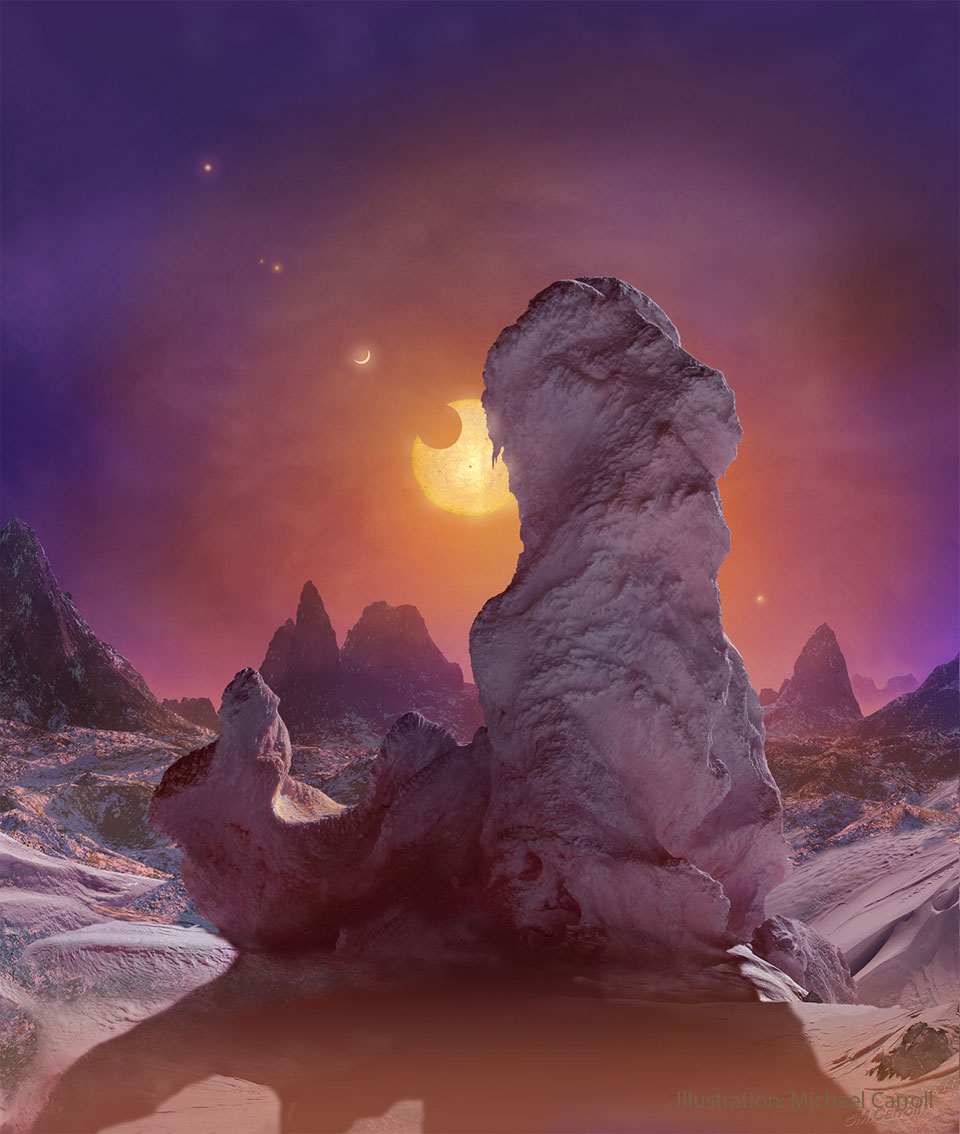2023年2月1日
The Seventh World of Trappist-1
Illustration Credit & Copyright: Michael Carroll
Explanation: Seven worlds orbit the ultracool dwarf star TRAPPIST-1. A mere 40 light-years away, many of the exoplanets were discovered in 2016 using the Transiting Planets and Planetesimals Small Telescope (TRAPPIST) located in the Atlas Mountains of Morocco, and later confirmed with telescope including NASA’s Spitzer Space Telescope. The TRAPPIST-1 planets are likely all rocky and similar in size to Earth, and so compose one of the largest treasure troves of terrestrial planets ever detected around a single star. Because they orbit very close to their faint, tiny star they could also have regions where surface temperatures allow for the presence of ice or even liquid water, a key ingredient for life. Their tantalizing proximity to Earth makes them prime candidates for future telescopic explorations of the atmospheres of potentially habitable planets. All seven exoplanets appear in the featured illustration, which imagines a view from the most distant known world of this system, TRAPPIST-1h, as having a rocky landscape covered in ice. Meanwhile, in the imagined background, one of the system’s inner planets crosses in front of the dim, orange, nearly Jupiter-sized parent star.
Astrophysicists: Browse 3,000+ codes in the Astrophysics Source Code Library
Tomorrow’s picture: open space
恒星TRAPPIST-1的第七颗行星
图标提供与版权: Michael Carroll
说明: 有7颗行星绕着极低温矮星TRAPPIST-1运行。这群近在40光年之处的系外行星,有数颗是2016年由位在摩洛哥阿特拉斯山脉的凌星行星及原行星小望远镜(TRAPPIST)所发现,后来更由包括NASA斯皮策太空望远镜在内的其他望远镜加以证实。TRAPPIST-1系统的行星可能都是石质天体,而且大小皆和地球相近,因此这是到目前为止在单一恒星周围找到的最大类地行星宝库。因为它们以很密近的距离绕着昏暗的小恒星运行,所以在某些区域的行星,表面温度可能让构成生命的关键成份液态水得以存在。更由于它们很邻近地球,所以它们会成为未来使用望远镜探索可能适居行星的大气之主要候选标的。这幅以这7颗系外行星为主题的图标,呈现从此系统现知最外围、假想有寒冰覆盖石原的行星TRAPPIST-1h看出去,所见到的假想景观。此外,在这张假想图的背景中,此系统的内行星之一正在凌越昏暗泛红、大小和木星相近的母星。(TRAPPIST读音接近“崔比斯特”)
天体物理学家: 浏览天体物理源代码库中的3000+代码
明日的图片: open space







